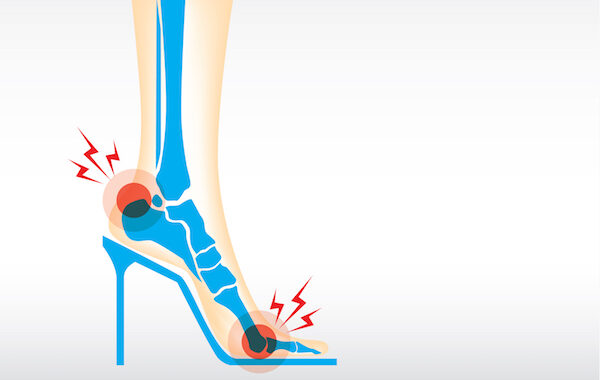High heels have the ability to change the posture and appearance of the one who wears them. They tend to make the leg look longer and add a slimming appearance to calves and ankles. But did you know that heels were originally developed for men?
The origin of high heels can be traced back to the 15th century where Persian soldiers wore them to help secure their feet in stirrups. Persian migrants then brought the trend to Europe where King Louis XIV of France made then fashionable in the 1660’s. As he was a relatively short man, the heels, coupled with tall wigs, created the illusion of height and became a symbol of wealth and nobility. It wasn’t until later that the trend was passed along to women who wore them more than fashion than any other reason.
Wearing heels didn’t only add height but they added foot pain as well. Doctors say that anytime the foot is constricted by a shoe, there will be inevitable pain. High heels not only constrict the foot but place a lot of stress and weight on the toes and cause a great deal of pain and problems like bunions, hammertoes calluses and more. In June 1868 the Ladies Treasury told its readers: “High-heel boots are universal, notwithstanding that medical men have been writing very severely against them. They say the fashion causes corns, cramps, lameness at an early age, lessens the size of the calf and thus makes it lose its symmetry”
The best advice is to avoid wearing high heels as much as possible but if you are intent on doing so, here are a few tips to relieve high heel pain:
- Make sure they are a good fit
- No matter how pretty or the price you pay for the shoe, make sure the shoes are neither too big nor too small. When shoes are too big, your foot is going to move around in the shoe and you’re likely to get blisters from the friction. On the other hand, shoes that are too small can put added stress on the toes. As a rule of thumb, if you put them on and your foot moves around or they immediately cause pain, don’t buy them!
- Consider An Open Toe
- Open toed shows relieve some of the stress on your toes as they constrict your feet a little less. This means you may be at a lesser risk for these problems.
- A Thicker Heel Helps
- A thicker heel distributes your weight more evenly than a stiletto. This alleviates some of the pressure on the most vulnerable parts of your feet.
- Treat Problems Effectively
- If you have a blister don’t just treat it with a band-aid and ointment. Instead, take a break from your stilettos until your blister heals. The next time you wear heels, try preventing these sores ahead of time with blister pads or silicone tape.
- Stretch
- When you take your shoes off, stretch your toes, feet and ankles. While sitting:
- lift your toes off the floor and spread your toes
- lift your feet until you rest on your heels, then twist your feet from left to right
- place marbles on the floor and use your toes to pick them up, move them a few inches and release
- When you take your shoes off, stretch your toes, feet and ankles. While sitting:
There are many other stretches and pain-relieving tips you can find on the internet but anything that helps to relax and stretch your toes, arches, and calves will help lessen the pain caused from wearing high heels.
In addition to keeping these tips in mind, whenever possible, kick your shoes off and let your feet relax.

